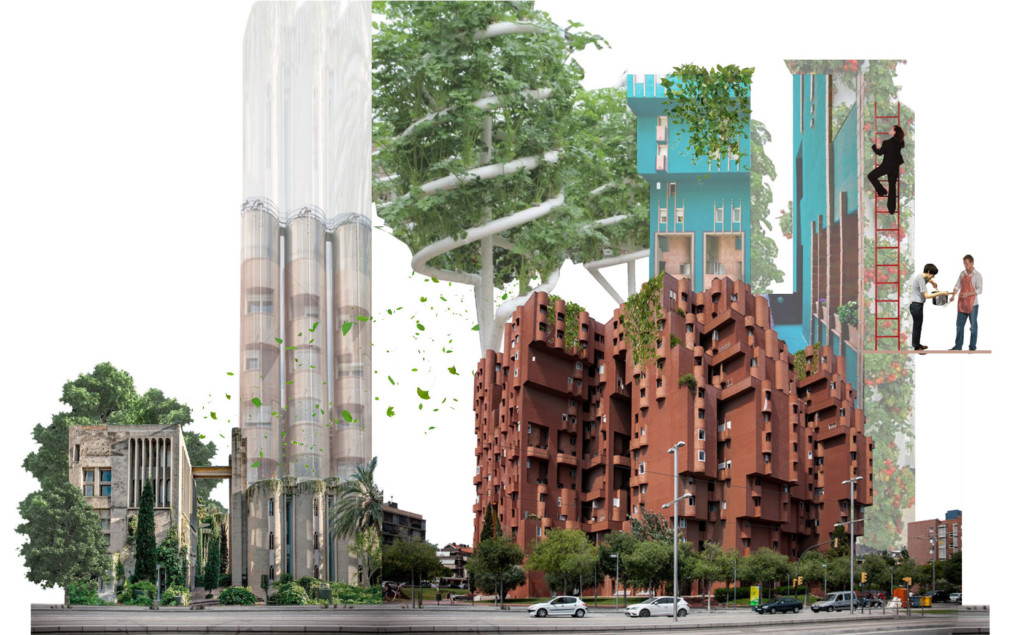
PROJECT ABSTRACT
The goal of this proposal is to mitigate the effects of current farming techniques. This will be achieved by lowering the carbon footprint and resource consumption needed to produce the most common fruits and vegetables in the typical Catalan diet. This farming experiment aims to provide the inhabitants of Walden 7, access to fresh produce while simultaneously creating a sense of community and environmental awareness through the use of a smarter farming system.
SITE
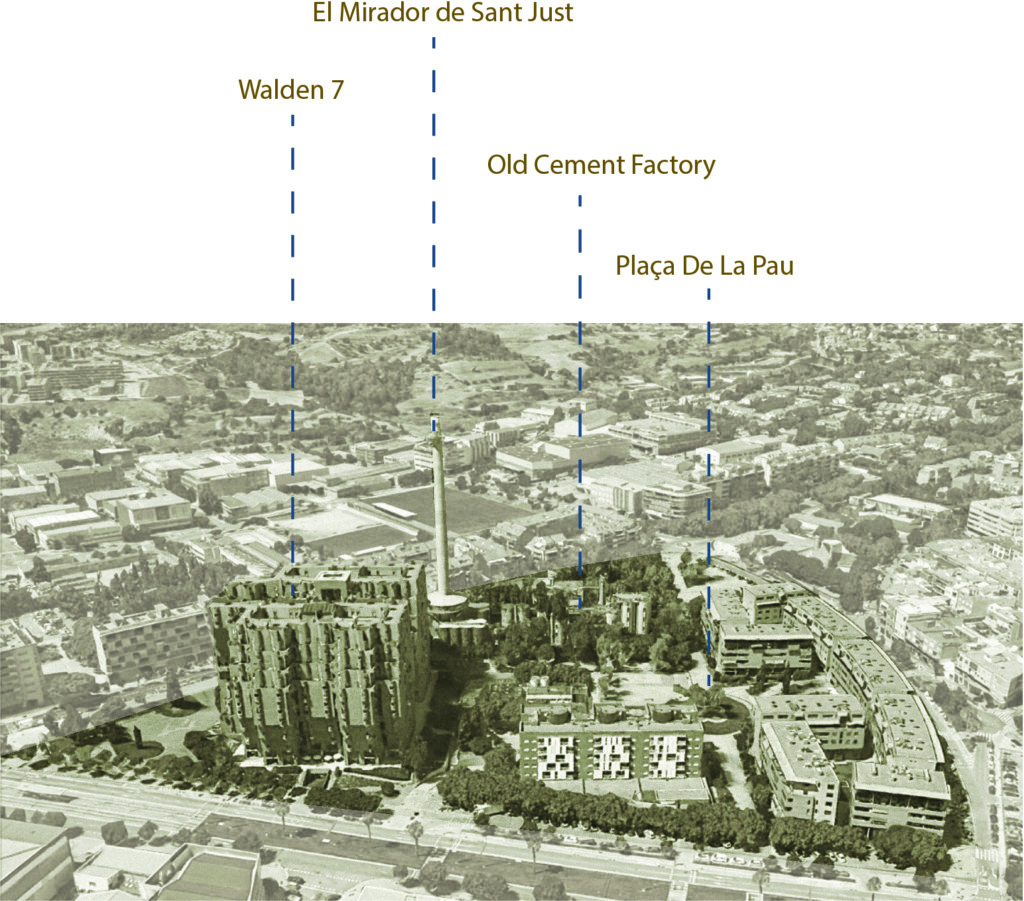
Walden 7 is located in the west of Barcelona, 1 hour from the city center. It is surrounded by an industrial area on the west and residences on the east. The building is oriented east-west, minimizing the exposed façade to the south. As a result, the courtyards created are tall, cool, and shaded. In the immediate complex, there is the residence and architecture office of Ricardo Bofill, which is an iconic product of adaptive reuse, a café, a plaza, and a commercial compound.
PHENOMENA
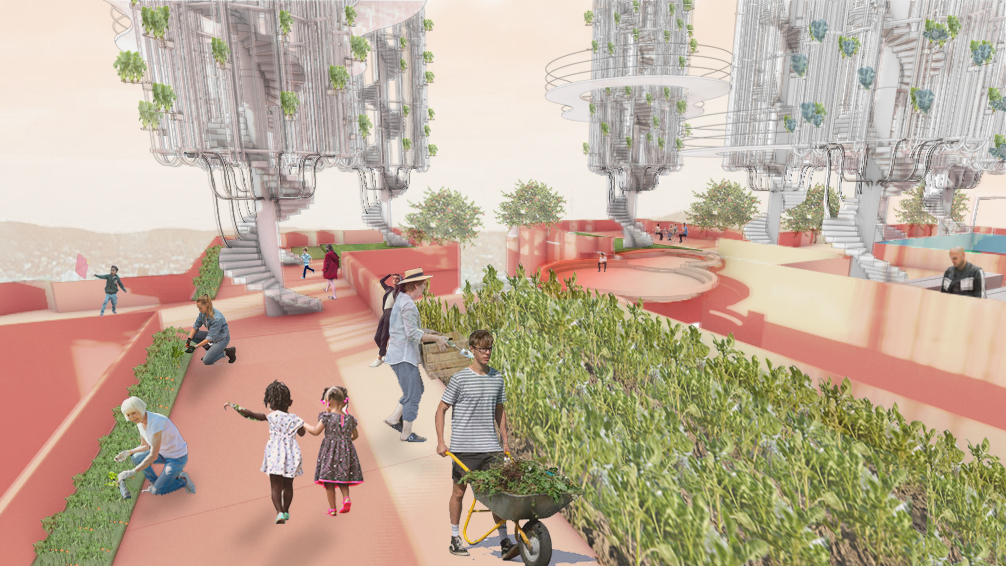
Focusing on the consumption needs of the residents of Walden 7, a working mechanism is designed such that the waste from one (i.e. the people living in Walden 7) becomes the food for another (plants), which in turn becomes nutrition for the same community. With hydroponic and traditional systems in place, the design could cater to 100% of the community’s needs. The necessities are complimented with rainwater harvesting, greywater recycling, food waste digesters to be converted into manure and compost tea. The process is designed to be in constant motion to meet the water and nutritional needs of the plants: stable and independent of human intervention.
FOOD CONSUMPTION
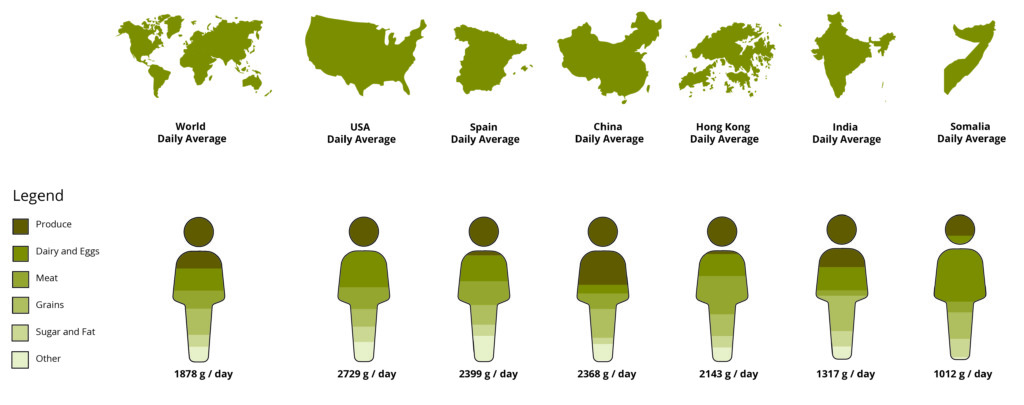
To define the consumption needs of Walden 7, we tried to understand an average Catalan diet, consumption per person, and food imports. In Spain, the daily consumption is higher than average (i.e. 2000 gms/person/day) to about 2400 gms per day.
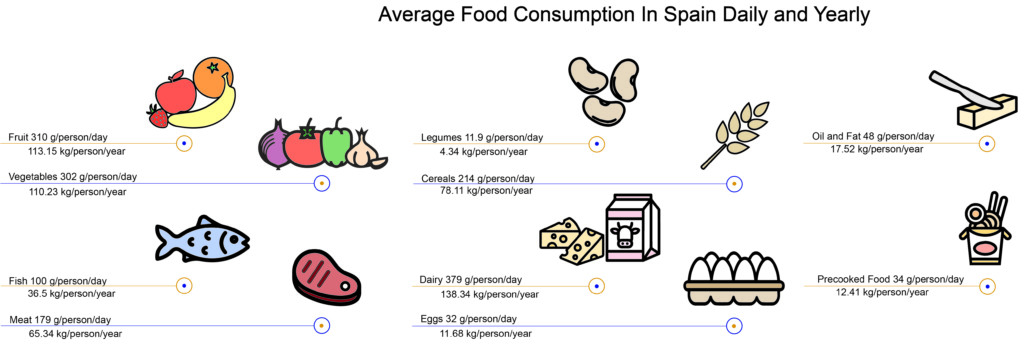
The maximum intake is of dairy products, followed closely by fruits and then vegetables, cereals, and meat. Contrary to popular notions, fish is only consumed 100 gms/person/day on an average as opposed to 380 gms/person/day of dairy. The intake of legumes is the least. The highest vegetable consumed is potato, i.e. 55kg/person/annum followed by 18 kgs of cucumber and 15 kgs of tomatoes.
FOOD MILES
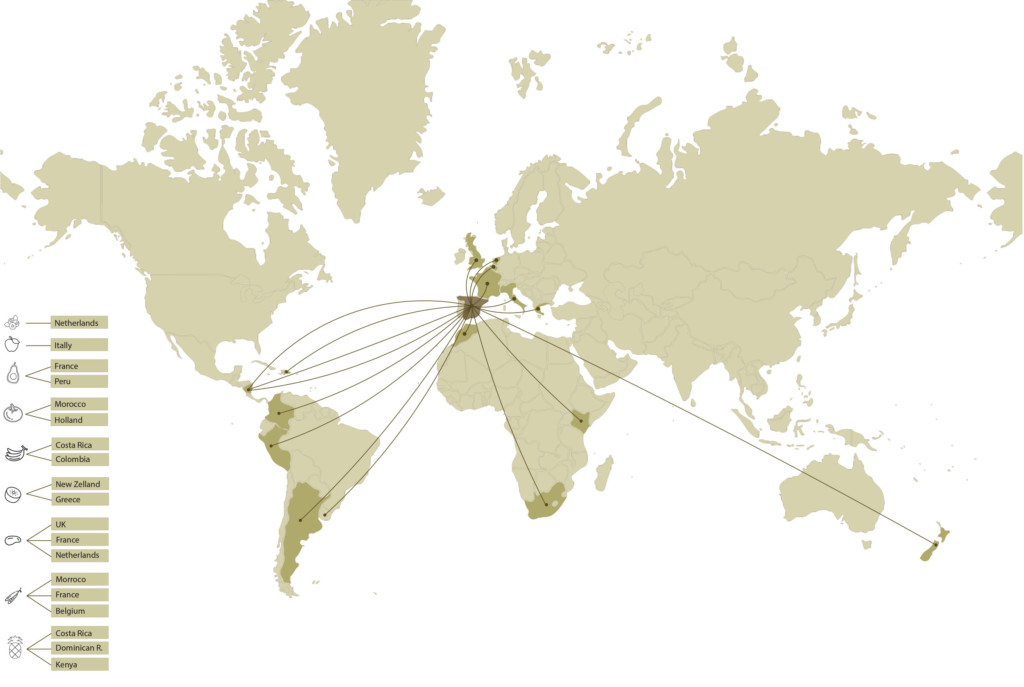
Spain imports 12% of all its food needs from France, Germany, the Netherland, Portugal, the UK, and a few South American countries. Even though potato is the highest consumed item by Spaniards, it is imported from northern European countries due to unfavorable climatic conditions for their growth in Spain.
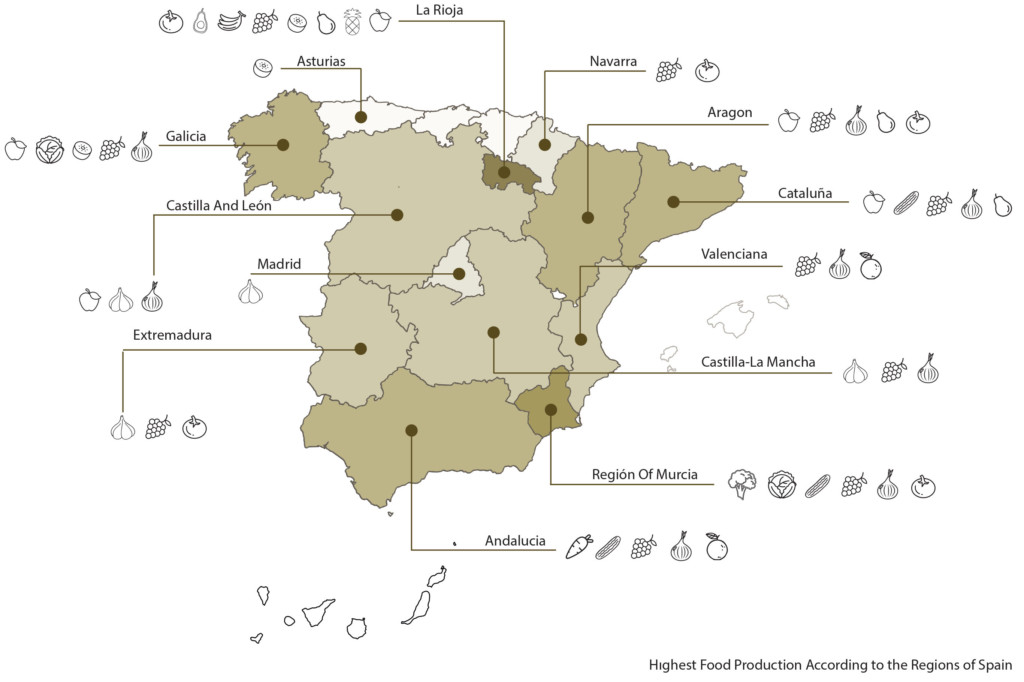
Fruits account for a major percentage of imports, mostly from South American countries. Barcelona, being a metropolitan, imports food products from distant farmlands and districts to meet its daily needs. The prominent districts are La Rioja and the Region of Huncia, both 500 km afar from Barcelona.
SANKEY DIAGRAM
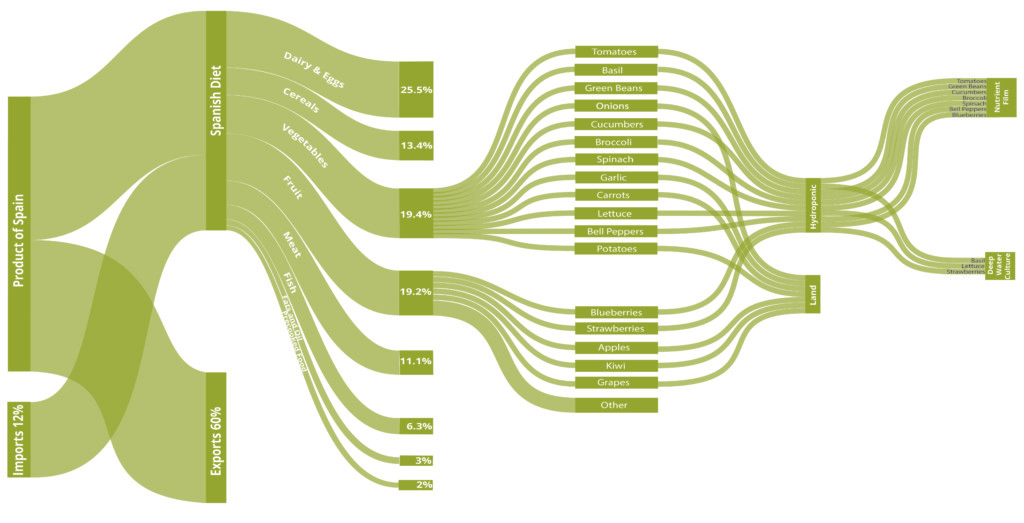
In this Sankey diagram, an initial analysis was conducted to quantify and to analyze from where and what is consumed by the typical Spanish diet. Then the topmost consumed fruits and vegetables were chosen to be grown on the vertical towers. From this a separation of what type of farming system is best suitable for each plant.
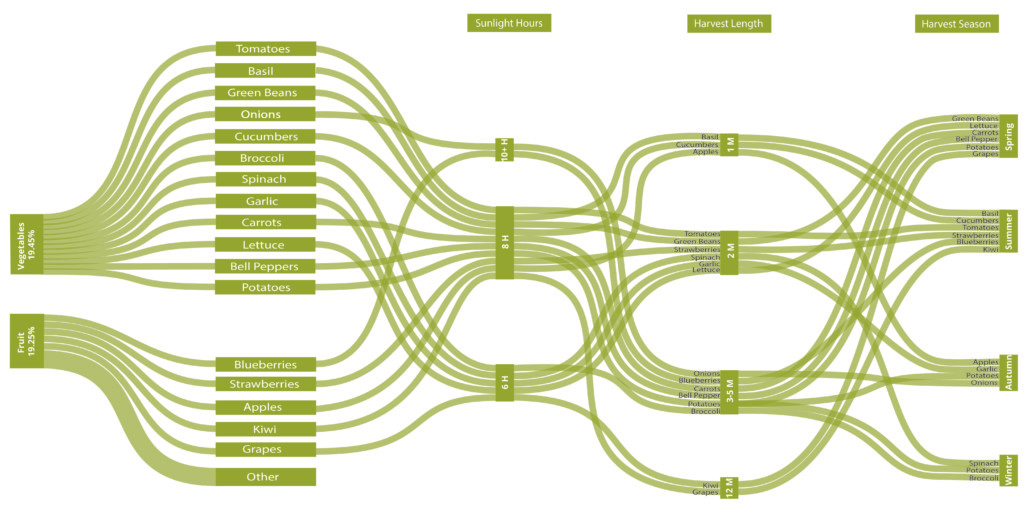
Further analysis was done to figure out the grouping and allocation of each of the vegetables according to three criteria, (SUN HOURS, HARVEST LENGHT, & HARVEST SEASON.) The SUNLIGHT HOURS are divided into the 3 ranges ( 6 hours, 8 hours & +10 hours) of sunlight needed by each fruit and vegetable. Then the HARVEST LENGHT was separated according to the number of days it takes to fully harvest each of the produce. Lastly, the HARVEST SEASON separates each of the fruits and vegetables to their best and optimal harvest time within the year.
METABOLIC DIAGRAM
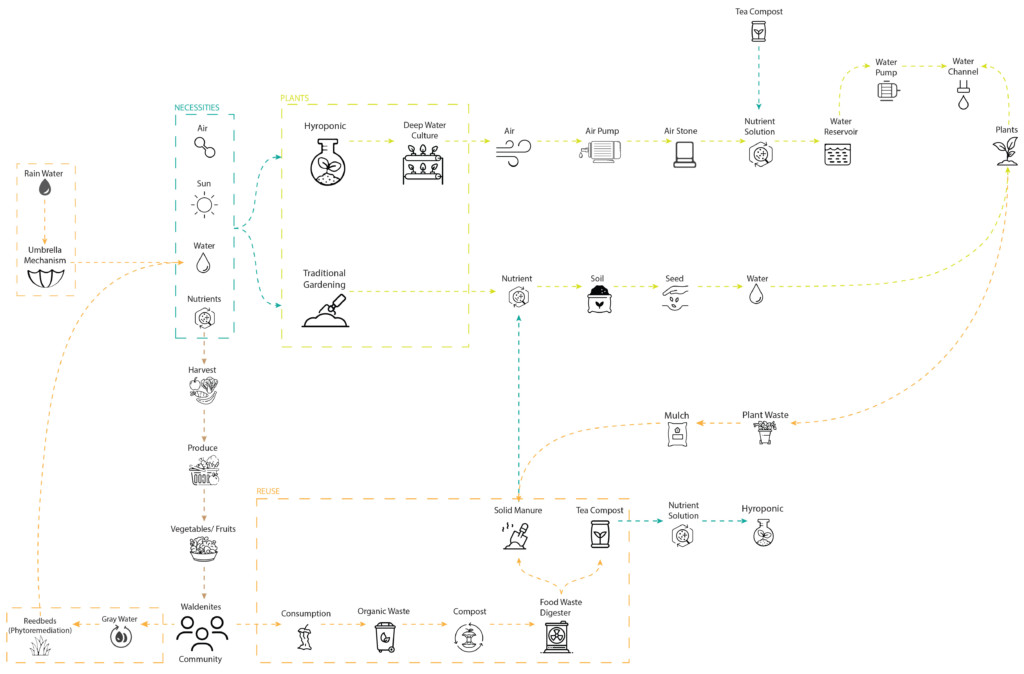
In this diagram, we wanted to express the interrelationship between plants and humans. In this context, we have considered the needs of plants in 4 main stages. These are water, sun, nutrients, and air. Keeping these needs in mind, we decided to grow our plants in two different ways. Traditional gardening and hydroponics, deep water solution. We meet the water needs of plants in two ways. The first is with umbrella mechanisms at the top of the cylinders. With the umbrella mechanism, we collect rainwater. And give it back to plants. Secondly, we use the gray water we take from people. The gray water is purified by reedbeds. We use both plant and organic wastes for nutrition solutions. We use solid manure for traditional Gardening, we use tea compost for hydroponic.
WORKING METHODOLOGY
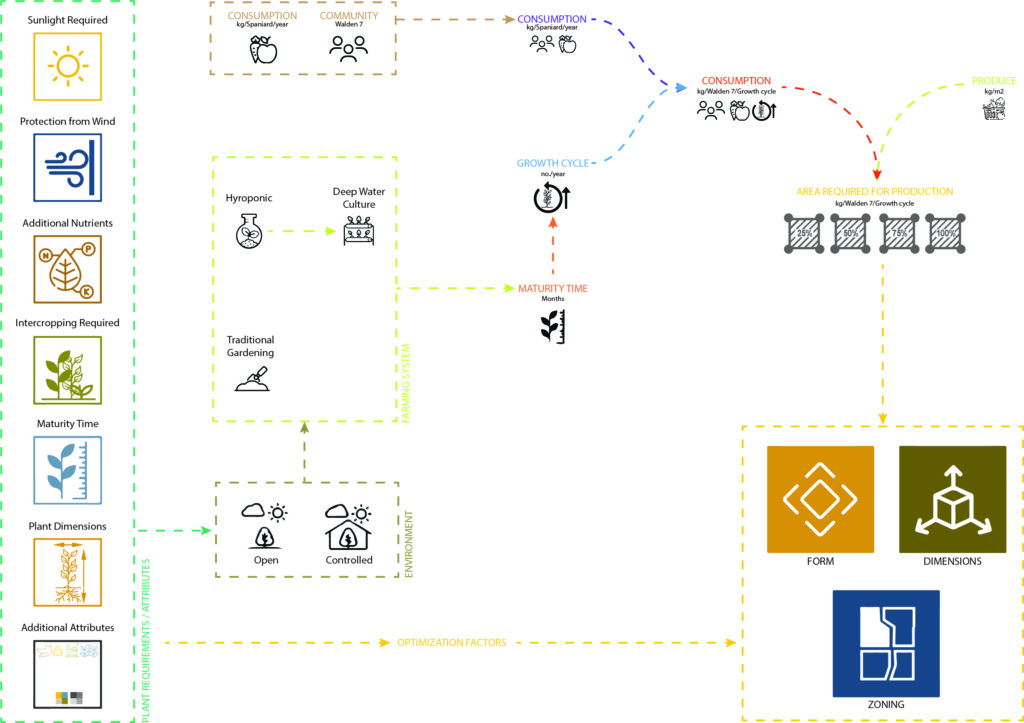
PLANT REQUIRMENTS
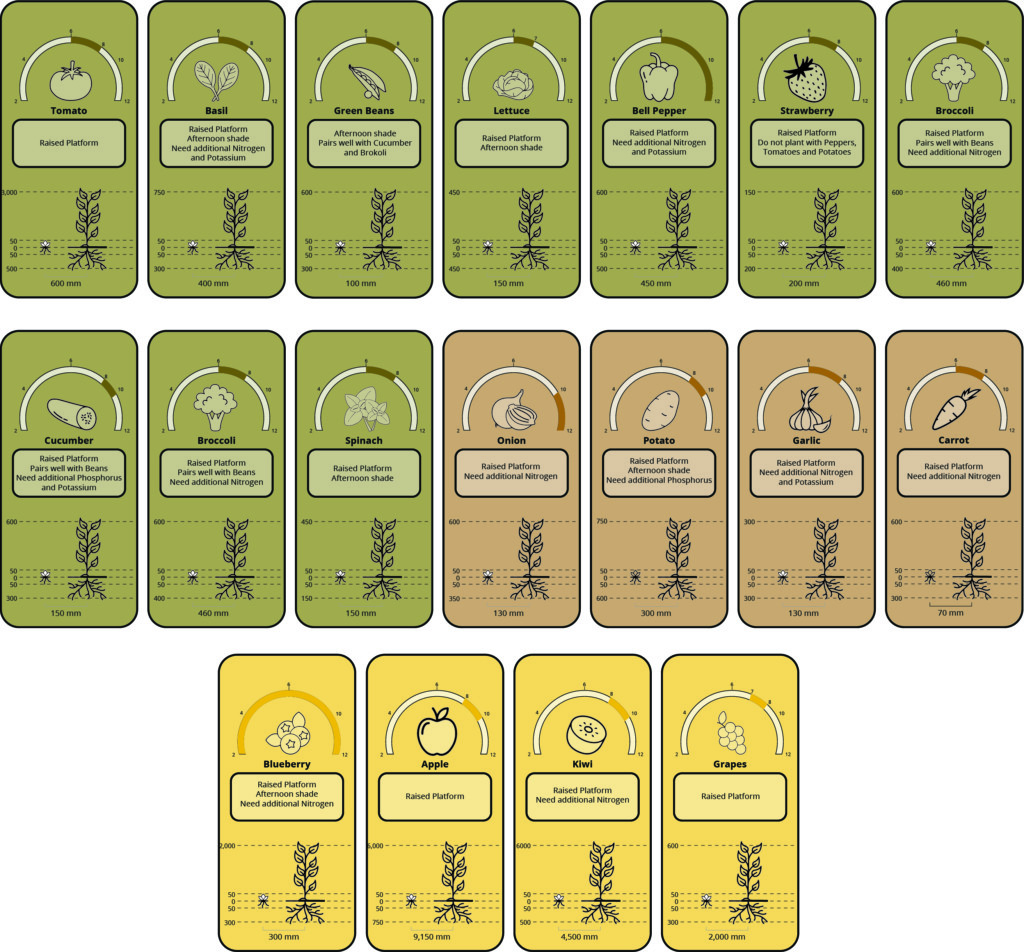
These list of fruit and vegetables were chosen as the most optimal for growing on the harvesting towers or consumed regularly by the Spanish. The three-color is due to the different types of systems that are needed to grow. Color can grow in the vertical tower aquaponics, the brown color is traditional farming thus needed to be on the ground with soil to cultivate. Lastly, the yellow color is deep-rooted aquaponic and they need a taller elevated platform so that there is an ample amount of space for the roots.
HARVESTING CYCLES & TEMPERATURE REQUIRMENTS
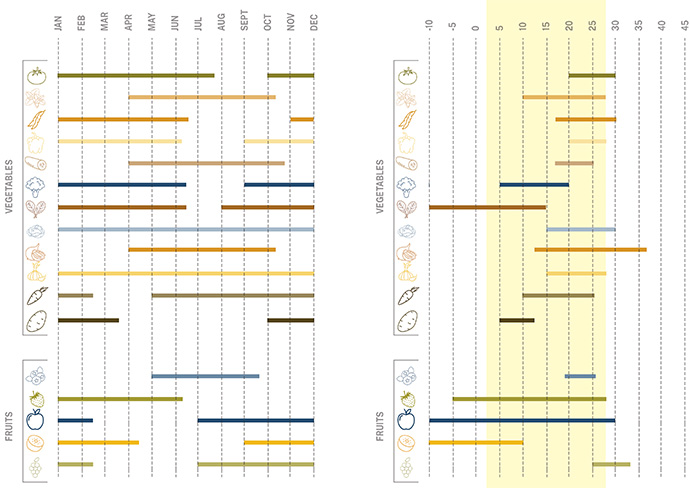
Each fruit and vegetable has a different growing and harvesting season. the goal for these harvesting towers is to be able to cultivate and harvest all of these fruits and vegetables all year long. This means that when the adequate temperatures have not been met, the harvesting tower will enclose itself to protect the product and keep it growing at an optimal condition.
DESIGN CONSIDERATIONS
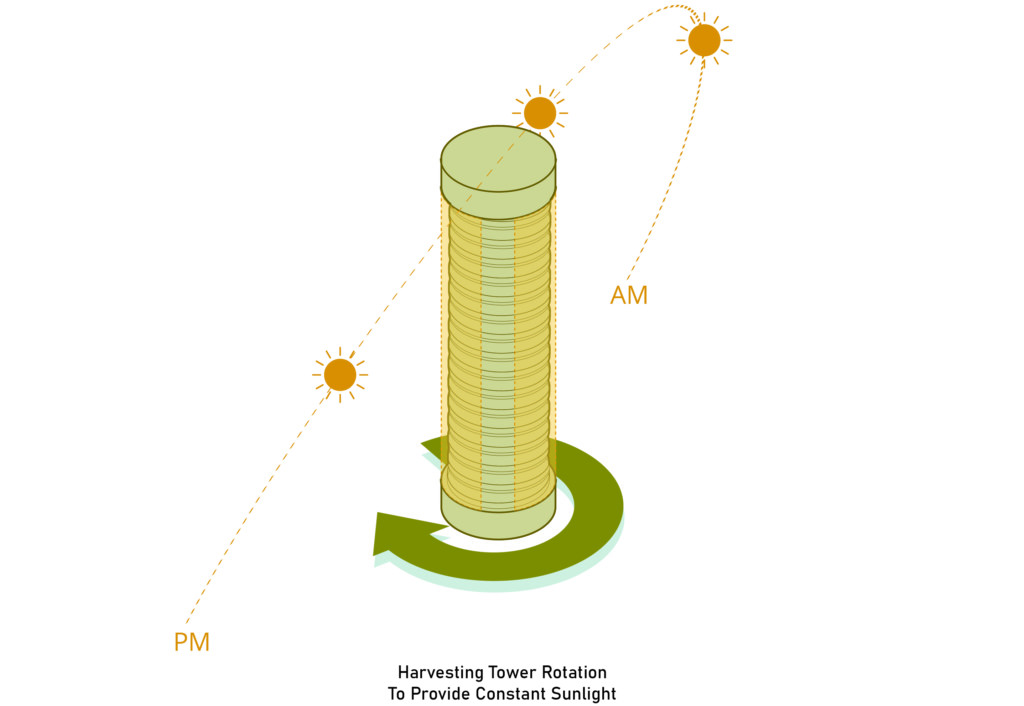
The area of these towers is optimized by extending the growing space vertically with respect to sun and shade levels. The towers rotate in order to provide optimum sunlight for each plant thought the day.
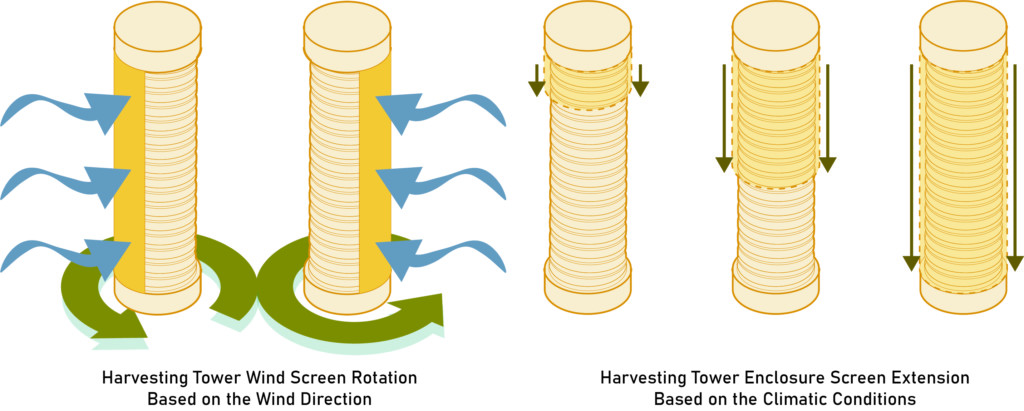
The towers rotate to provide wind protection to the growing plants and when the climatic conditions are too cold or unfavorable the A protecting screen deploys down covering the complete or partial seedlings to provide the most optimal growing conditions.

These towers take up minimal floor space to utilize the remaining roof space for community activities that are dominated and dictated by the produce that is grown in the towers. This leaves the residents with a variety of activities throughout the year as the growing season’s change.
HYPER DRAWING
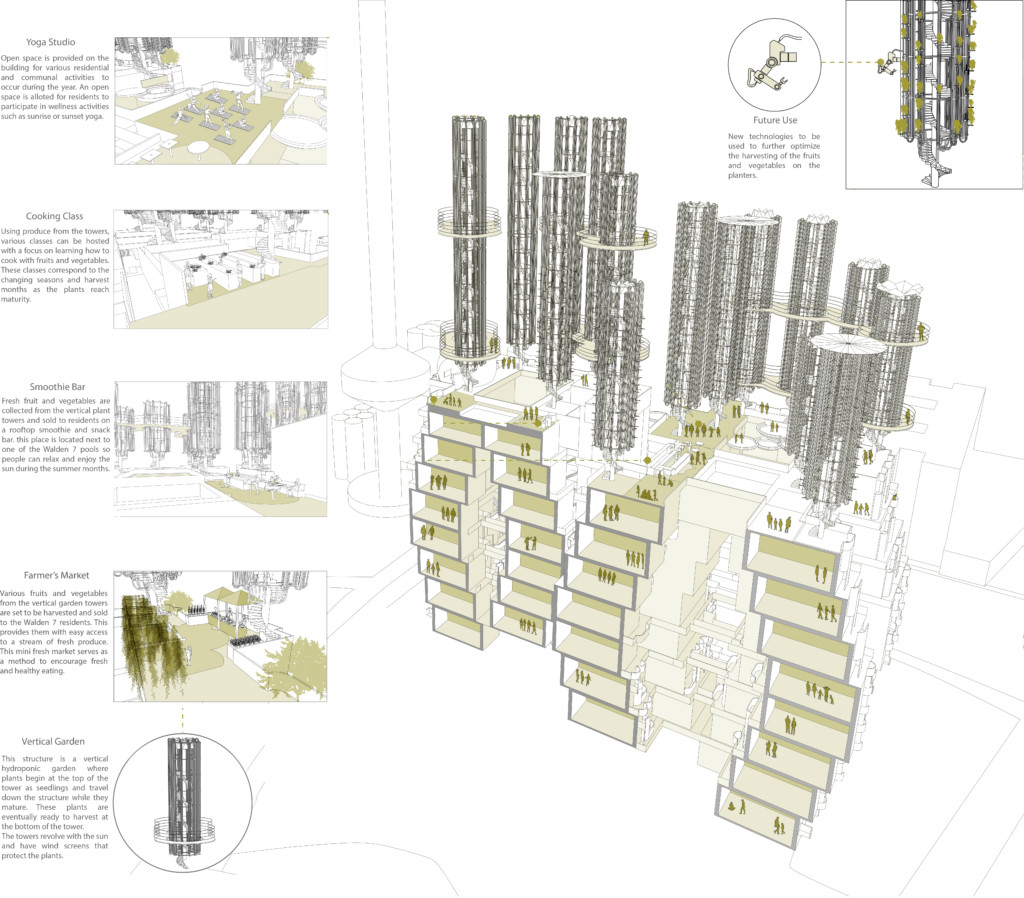
A series of hybrid activity spaces are created above the Walden 7 but below the harvesting towers. These in-between spaces can be transformed to provide the Waldonites with a continuous and flexible space where they can enjoy year-round.
SPATIAL QUALITIES

The Vertical Harvesting towers act as growth tracking for a plant. The fruit or vegetable starts as a seedling at the top of the tower in an extending plant holder. In this position, the seedling receives the most sunlight as it begins the growth process. The arms of the tower extend out and down to accommodate for the growth of the seedling as the plant matures.

E-COMUN is centered around the concept of community. Focusing on communal activity and the typical Spanish diet, we created vertical gardens out of hydroponic methods. This roof addition creates a more sustainable diet for the Spaniards by meeting 100% of Walden 7s produce needs. This significantly reduces the community’s carbon footprint by bringing the vegetables to them and cutting down on food miles.
PHYSICAL MODEL AND ROTATING TOWER PROTOTYPE
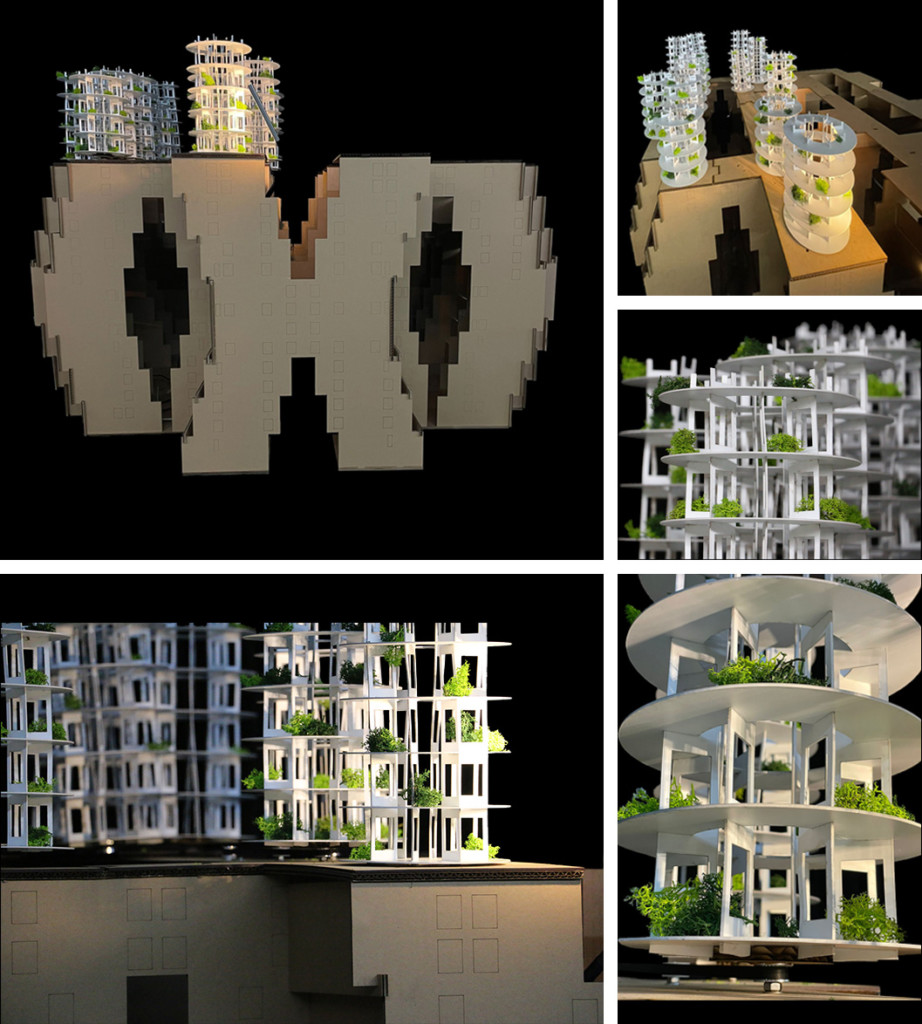
Physical model prototype
2050 VISION
Over the next decades, this metabolic roof will provide food and activity space to a once empty roof structure. This type of architectural intervention will set precedents for future cities to follow in the aim to mitigate the food resource problem in the future. With the help of technology and backed up by the community the food we consume does not have to come from far away lands to sustain us. Instead, it can be grown locally more sustainably and consciously. Bringing back the connection to the food growing process.
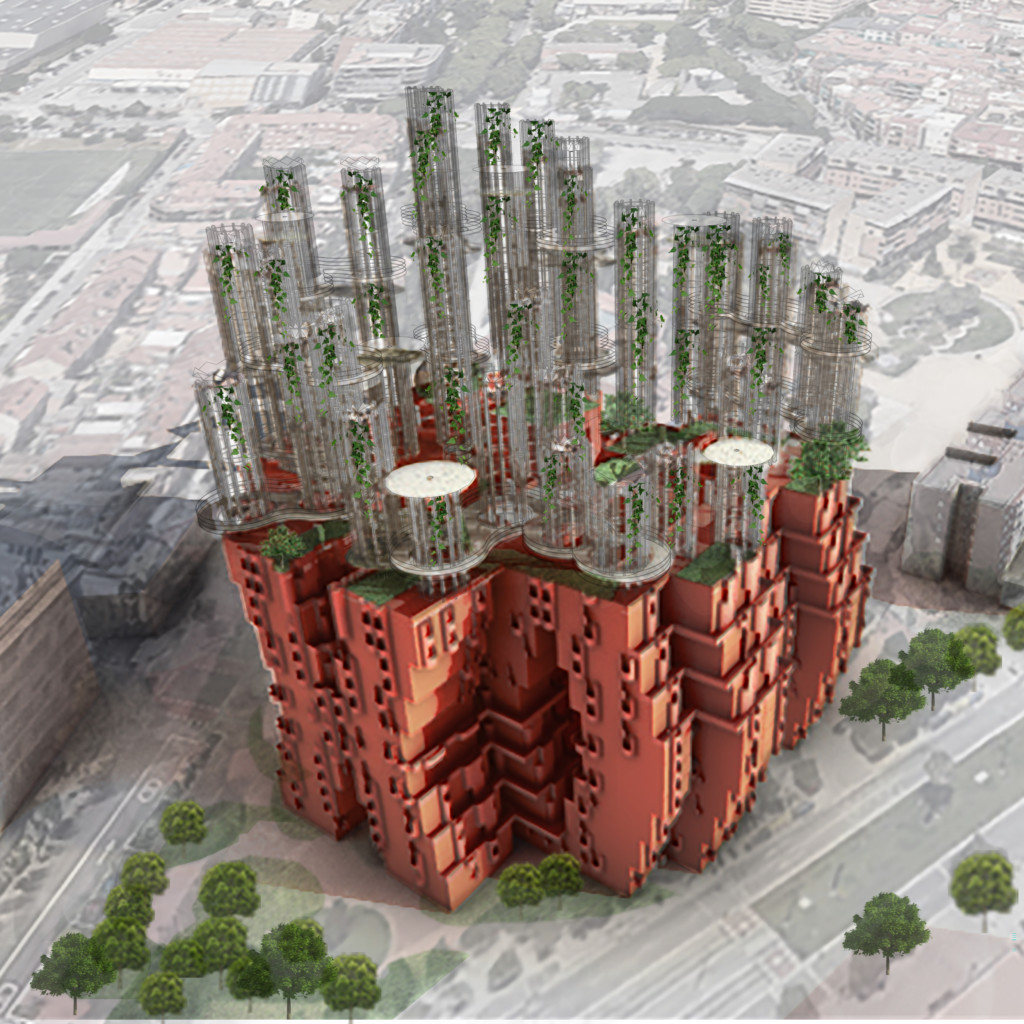
E-COMUN is a project of IAAC, the Institute for Advanced Architecture of Catalonia developed during the Master in Advanced Architecture 2021/2022 by students: Diego Vazquez de Santos, Emily Bishop, Gizem Demirkiran, Arunima Kalra Faculty: Javier Pena & Oriol Carrasco; Student Assistant: Alexander Dommershausen